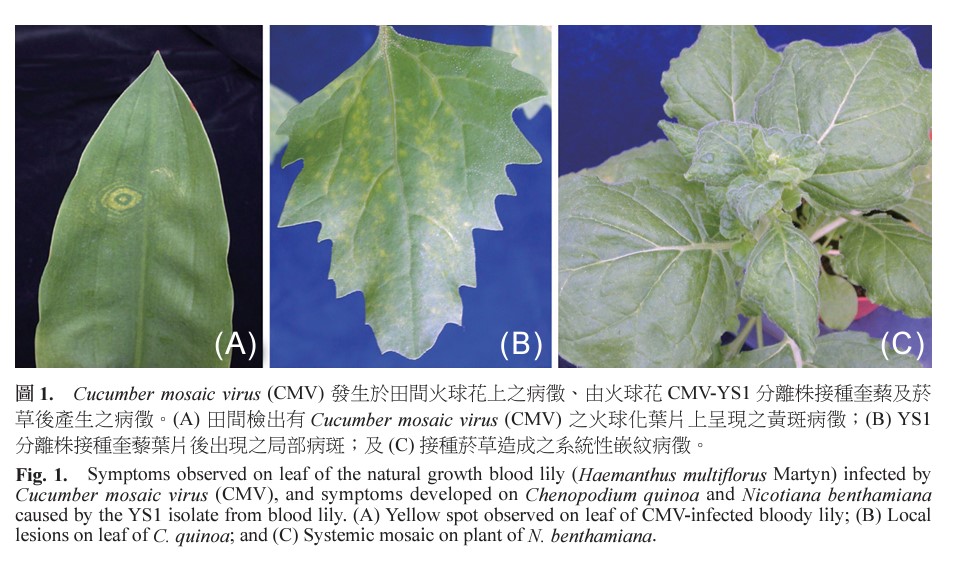All issues

Author:Chin-Chih Chen* and Fen-Lang Chiang
Abstract:
A yellow spot symptom observed on leaves of blood lily (Haemanthus multiflorus Martyn.) plant was used for virus identification. Later, a virus isolate (YS1) was obtained from single-lesion isolation by mechanical inoculation of this diseased tissue extracts to leaves of Chenopodium quinoa Willd. Extracts of the diseased blood lily, local lesions on leaf of C. quinoa and systemic mosaic leaf tissues of Nicotiana benthamiana caused by YS-1 were all reacted strongly with the antiserum against Cucumber mosaic virus (CMV) in indirect enzyme-linked immunosorbent assay. An expected size of 485-bp DNA fragment was amplified from total RNAs of the field blood lily sample, YS1-infected C. quinoa and N. benthamiana by reverse transcription-polymerase chain reaction (RT-PCR) using the primer pair of CMV-up/CMV-dw. The nucleotide sequence of coat protein (CP) region of YS1 isolate was determined and submitted to the GenBank with the accession number KM066122. The amino acid sequence of YS1-CP shared higher than 90% identity with those of known CMV isolates. Based on the results of serological assay and molecular evidence, it indicated that YS1 isolated from blood lily was an isolate of CMV. Although CMV distributes worldwide and has a large host range. This is the first report to demonstrate that blood lily is a nature host of CMV in Taiwan. Total RNAs of YS1-infected plant tissues obtained by the rapid extraction way with TPS (Thomson & Dietzgen 1995) or PSE buffer (prepared in this study) were all successfully applied on the RT-PCR analysis of YS1. The potential use of the rapid extraction of plant total RNAs for RT-PCR amplification of CMV is proved in this study.
Key words:Cucumber mosaic virus (CMV), Blood lily (Haemanthus multiflorus Martyn.), Serological assay, Rapid detection with RT-PCR
Download:![]() PDF Links
PDF Links
- 1. Development of Tractor-Mounted Seedling Transplanter for Sweet Potato
- 2. Synergistic Effect of Additional Gas on the Toxicity of Phosphine to Sitophilus oryzae and Sitophilus zeamais (Coleoptera: Dryophthoridae)
- 3. Effects of Temperature and Solar Radiation on Growth Traits and Plant Elements in Purple Leafy Sweet Potato
 Submit your manuscript
Submit your manuscript
 Guide for authors
Guide for authors